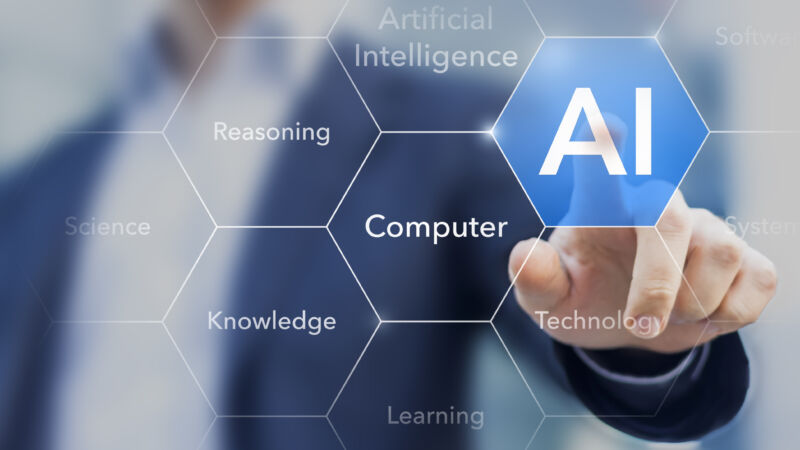Artificial intelligence (AI) has proven that it is a far cry from just a buzzword. Over the years, AI in accounting has increasingly gained traction and, going forward, it will continue to transform the tax and accounting profession. Is your firm ready?
Like many industries, the accounting profession is exploring how AI can improve efficiencies and help strained firms better serve clients. Underscoring this point, the most recent CPA.com and AICPA PCPS CAS Benchmark Survey found that 24 percent of top performing CAS practices are leveraging AI.
Furthermore, the “2022 VSCPA Future of Work Survey” found that the top five technologies respondents looked to add in 2023, by order of importance, were:
- Advanced cybersecurity measures (21 percent)
- AI (14 percent)
- Workflow software (13 percent)
- Robotic process automation (RPA) (10 percent)
- Enterprise resource planning (ERP) (10 percent)
Within the profession, AI is technology that is met with excitement and curiosity, but also anxiety. How will AI shape the future of accounting? Will it replace CPAs? What are the challenges? This article looks to address these questions and more.
How is artificial intelligence used in accounting?
AI in accounting is not new but recent developments are marking seismic shifts in the application of AI. We’ll take a closer look at some of these shifts later, but let’s first explore some ways AI is currently used in accounting.
One of the significant advantages of AI is its ability to identify patterns in large data sets in a way that no human can. This is one of the key reasons why AI plays an important role in audit.
In audit, AI enables auditors to analyze large data sets and swiftly identify anomalies and patterns. This means auditors can shift away from sampling in favor of reviewing all of a client’s transactions in real time. This results in improved outcomes as auditors can better identify risky transactions and deliver higher-quality audits to clients.
AI also plays a significant role in tax research. Tax research can be challenging because there’s simply too much information from too many sources. Sifting through the countless online resources for answers is not only time consuming and highly inefficient, but also leads to greater risk of errors and misinterpretations.
To address this issue, Thomson Reuters developed its AI-powered tax and accounting research tool CoCounsel Tax. It features accelerated research times by integrating multiple knowledge sources — including trusted Checkpoint content — with agentic AI technology. This helps accountants find the best possible answers in the least amount of time based on natural language questions.
There’s also a rise in e-invoice automation, in which key invoice data is extracted to help automate the processing of invoices.
Domingo Huh, Lead UX designer for Thomson Reuters Labs, commented, “When invoices are accurate, it becomes a source of ground truth. That then gives us additional opportunities to piggyback off of for additional benefits.”
What are the challenges of AI in accounting?
AI is changing how accounting professionals work and serve their clients. One of the greatest challenges can be access to client data.
“When you don’t have access to that data, you become much more reactive and that limits the movement of typical accounting disciplines to go from accounting to more maybe of a desirable role of advisory,” Huh said.
Furthermore, there are things that AI is not good at. For instance, artificial intelligence struggles with:
- Adjusting to unseen/uncertain situations
- Gaining semantic understanding from text
- Interpreting nuanced language (e.g., legal documents)
- Providing clear and tailored guidance and advice
Going forward, expect to see a greater call for standards and specifications in the tax industry.
“Broadly, I think the industry as a whole really sees the value in having this bridge for custom taxonomies and ontologies to map to a standard so that we can slice and dice and compare things much more effectively and logically,” Huh said.
Will CPAs be replaced by AI?
One of the commonly cited questions involving AI is: will it replace CPAs? The short answer is no. AI is not designed to replace humans in the profession, but instead augment workflows and increase efficiencies.
However, Huh acknowledges that some jobs may be lost, especially among those who do not adapt or seek ways to elevate their work with the use of AI. This means focusing on more higher value work rather than mundane, routine tasks.
“While you can say that there is validity to the fears, I think we also know that we can advance much further with that technology. And so there are different ways that we can look at the future,” Huh said. “In some ways, AI will be an autonomous agent, but in other ways it will augment us beyond what our current capabilities are, and we are still just scratching the surface of the possibilities at this point.”
It is also important to keep in mind that there are skills that cannot be replicated by AI, such as maintaining and nurturing client relationships.
How has the landscape of AI in accounting changed over the past six months?
Perhaps the most profound shift in the AI landscape in recent months is the rise generative AI. Generative AI is a subfield of artificial intelligence that focuses on creating content from scratch, such as text, music, images or video.
In November 2022, generative AI rocked news headlines with the debut of ChatGPT, a next-generation chatbot developed by the research lab OpenAI.
As noted by KPMG, “ChatGPT attracted more than a million users in just five days, making it one of the most rapidly adopted new technology platforms in history.”
Huh thinks the challenge for accountants is dealing with two different states. “One is in the past where we have all this legacy technology that was built in a certain age of AI, and now we are entering a new age of artificial general intelligence (AGI) where it can actually communicate, maintain conversation, and perform things autonomously. The main point is we now have many more opportunities to help users optimize their tasks and do more.”
How will AI shape the future of the accounting profession?
Going forward, AI will enable accounting professionals to further the shift from being reactive to more proactive in serving clients. Clients expect and want more from their accountant, and AI-powered solutions will enable accountants to better meet those expectations.
“[Accountants] want to be able to start thinking in the theoretical space to do more scenario modeling and ideating on more nuanced types of solutions for their clients,” said Huh.
Huh also believes that accountants will need to collaborate more with AI and with hybrid teams.
“We’re going to see an increase in the number of interactions with AI, autonomous agents and hybrid teams where it’s a mix of humans and their digital peers working in collaboration, so that whole landscape of how we operate and how we collaborate is really going to change,” said Huh. “I think we just started scratching the surface in the past six months. I think in the next year or two, we’re going to see seismic shifts.”
What are the benefits of implementing an AI-powered tax software?
The future is here. AI has and will continue to transform the tax and accounting landscape. Those firms that embrace the technology stand to reap the benefits. AI-powered tax software enables accountants to work smarter and faster, and more easily shift away from a compliance base in favor of higher-value, strategic services.
Are you interested in knowing more about the state of AI in tax and accounting? Check out our free guide designed to help answer your questions.

CoCounsel: Your trusted AI partner
One agentic AI assistant for tax, audit, and accounting professionals.
Learn more ↗







